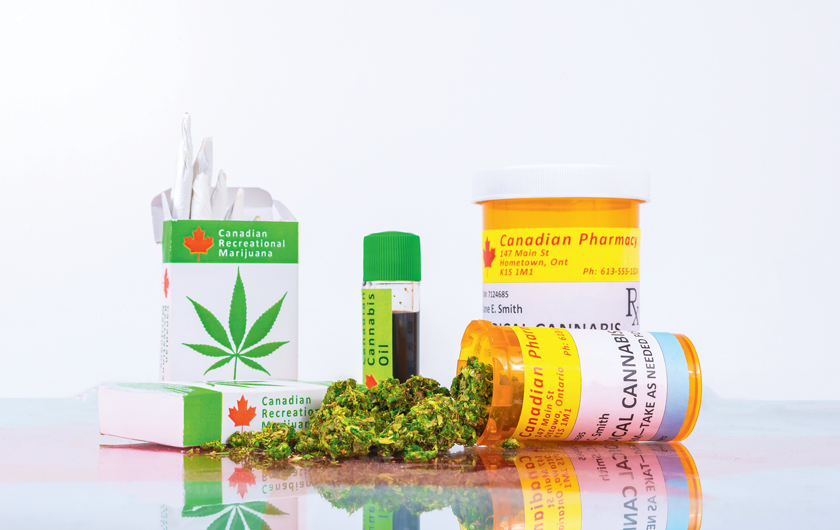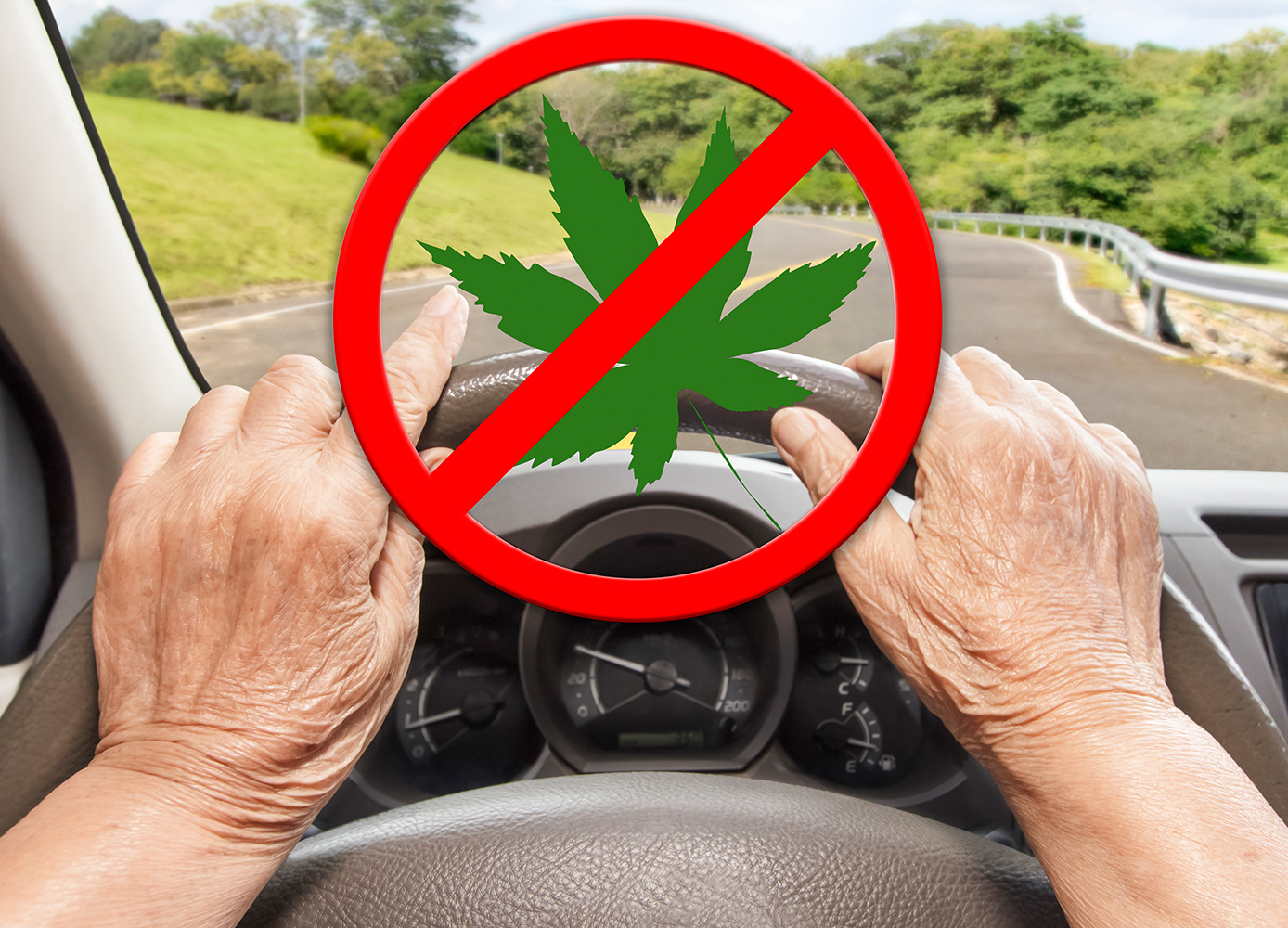Researchers know something about the risks and benefits of medicinal cannabis, but there remains a great deal they don’t know
By Wendy Haaf
Photo: iStock/madsci.
Cannabis has been touted as a remedy for conditions ranging from glaucoma and back pain to insomnia and post-traumatic stress disorder—or more precisely, two of the more than 100 plant compounds it contains have been. But do they work? Are they really as innocuous as many people would lead you to believe? And are the marijuana products authorized for medical use the same as the recreational varieties you can now purchase legally? Here are some questions you may be asking, and some answers about what you need to know.
What do we know about the medical benefits, if any, of cannabis?
The short answer: Not much. When it comes to the kind of robust research required to determine whether or not a treatment works, “only a handful of conditions have been adequately studied,” says Dr. Mike Allan, the director of the Department of Programs and Practice Support—a division of The College of Family Physicians of Canada—and a professor of family medicine at the University of Alberta in Edmonton.
Reviewing the scientific literature to create a set of guidelines for family physicians, Allan and his colleagues found reasonable evidence that cannabinoids (chemical compounds found in cannabis) may be effective in treating four specific symptoms: nerve-related pain, end-of-life pain (usually related to cancer), chemotherapy-induced nausea and vomiting, and spasticity (abnormal involuntary muscle tightness, which occurs in conditions such as multiple sclerosis). “That’s where we have a reasonably good body of evidence,” Allan says.
In nerve pain, for example, “looking at the conglomerate of all the studies together, about 39 per cent of patients would feel a moderate improvement in their pain if they used cannabinoids—but 30 per cent would also feel better if they used a placebo,” he says. “In palliative pain, it’s not quite so good—30 per cent versus 23 per cent for placebo—but it’s probably effective there, as well.” For chemotherapy-related nausea and vomiting, “about 40 per cent of patients would say it works, versus about 13 per cent who take a placebo. For spasticity, it is helpful, with around the same effect as for pain.”
For other conditions, however, there isn’t enough research to judge whether cannabinoids are helpful. Take glaucoma:
“The only randomized controlled trial for glaucoma had six patients, total,” Allan explains. In the case of post-traumatic stress disorder, on the other hand, studies have yielded conflicting results. “While people seem to believe we have a robust amount of evidence, we actually don’t—the research is lacking.”
And even the best evidence we have is limited because the vast majority of studies have been conducted using manufactured cannabis products similar to single substances found in the plant, as opposed to studying the effects of natural cannabis. The two cannabinoids that are of the most interest medically are THC—the stuff that gets you high—and CBD, which has no such effect and, in fact, dampens THC’s euphoric properties. Most recreational marijuana contains very high levels of THC and little CBD, while medical-grade products contain varying levels of one, the other, or both. “It’s really important that people understand what this research has truly found,” Allan says.
However, he adds, “there is one area that deserves mention that wasn’t included in our guidelines, since at the time they were finalized, the research was just beginning to come out. In the past year, there have been three very good publications on the use of CBD for the treatment of very complex, difficult-to-manage seizure disorders, mostly in children. CBD has some meaningful effects for patients who are already on two and three medications and are not getting adequate relief of seizures.”
Another bright spot on the horizon: thanks to legalization, “it’s now going to be quite a bit easier to research the potential roles that THC and CBD might have in treating different conditions,” says Jason Busse, the associate director of the Michael G. DeGroote Centre for Medicinal Cannabis Research at McMaster University in Hamilton, ON. At his institution, for example, “we’re setting up some pilot randomized controlled trials in areas such as preventing chronic pain after knee-replacement surgery. We’re also looking at potential uses in treating post-traumatic stress disorder and sleep disorders.”
What do we know about the potential side effects of medicinal cannabis products?
“The list of adverse events associated with cannabinoid use is quite long,” Allan says. “The risk for feeling sedated is 50 per cent when you use cannabinoids, versus 30 per cent with placebo. The chance of having a low-blood-pressure event is around 25 per cent versus 11 per cent, and the chances of feeling dizzy are 32 per cent versus seven per cent.”
In addition to making activities such as driving more dangerous, such effects are particularly risky in older adults, since they can potentially increase the likelihood of falling. Those who consume cannabinoids regularly may have trouble with memory, concentration, and attention span, as well. As Allan explains, “There’s also evidence and concern that cannabinoids can worsen things such as paranoia and anxiety,” as well as other mental health issues, such as depression.
In fact, despite cannabis’s benign reputation, these and other side effects (which appear to be dose-related) can be severe.
“I’ve heard people say you can’t overdose on cannabis,” Busse says, “but I think the more accurate statement is you can’t fatally overdose. You certainly can take more than you intended to and find yourself in a situation in which you can even experience psychotic symptoms such as hallucinations. Every year, we see hospital emergency department visits for cannabis-related issues.”
And contrary to another popular notion about marijuana and THC, “you can become dependent,” Busse adds. “We know rates of addiction for regular users are in the neighbourhood of seven per cent.”
There’s also a long list of contraindications for the use of cannabis, explains Dr. David Conn, the VP of education and a staff psychiatrist at Baycrest Health Sciences in Toronto. Even if you opt for edible products such as oils rather than smoking (which is linked with an increased risk for heart attack, stroke, and lung disease), “if you have severe kidney or liver disease, you shouldn’t use cannabis,” Conn says.
The same goes for people with a history of serious mental health issues (such as severe mood disorders), a his-tory of substance-use disorders, and even those with a family history of psychosis, all of whom are at a greater risk for developing problems from using cannabis. “And if people are using any medications that are sedating, or any psychiatric drugs, there can be a significant interaction,” Conn adds. (Little is known about interactions with other classes of medications.)
What about CBD? “In clinical trials comparing THC to CBD, it’s very hard to tease out differences that are meaningful between them,” Allan says. What’s more, based on the studies probing the use of CBD for severe seizure disorders, “one in four patients will feel excessively tired, one in five will lose appetite, and one in five will have a diarrhea-type episode,” he explains. “The research also suggests that some will have changes in their liver function.”
When is it worth trying medicinal cannabis?
“There are some physicians who are more open to cannabis, and then others who are very, very cautious,” Conn says. He believes that even for those conditions for which we have the best evidence that cannabis may be useful, “weighing the risks versus the benefits, it should generally be considered a second-line treatment,” he says. “In other words, if you’re having a problem and conventional treatments aren’t working, either pharmacological or non-pharmacological, it might be worth considering—depending, of course, on various safety issues, such as other medical conditions.”
If I’m interested in trying cannabis—for example, for chronic pain—are there any reasons I shouldn’t just go to my local dispensary rather than getting a referral to a physician who authorizes medical cannabis?
There are many problems with this sort of self-treatment, beginning with the fact that while medical products come in varying concentrations of CBD and THC, recreational cannabis may contain very high levels of THC and little CBD, greatly increasing the odds of experiencing negative side effects, including mental health problems. (THC and CBD levels are normally indicated on legally sold products, but unless you know what the numbers indicate, that’s not going to help you much.)
In a few years, perhaps research will have yielded better answers about which components of cannabis are effective for treating specific conditions, as well as about the type and magnitude of any associated risks. Until then, however, it’s worth remembering a past lesson: the widespread prescribing of opioid medications for chronic pain in the absence of such studies and the resulting wave of problems, including spikes in deaths from overdose and drug interactions. “I certainly hope that there’s recognition from that experience that we have to get the evidence now, before the practice has expanded,” Busse says. “It’s going to be essential to ensure that enthusiasm for cannabis treatment is supported by evidence.”
Safety Considerations
With the legalization of marijuana, baby boomers who tried the drug in the 1960s and ’70s may be “much more likely to try it again recreationally,” says Dr. David Conn, the VP of education and a staff psychiatrist at Baycrest Health Sciences in Toronto.
If you fall into that category, Canada’s Lower-Risk Cannabis Use Guidelines (LRCUG) may be of interest: they outline 10 tips for safer use, including opting for lower-strength products containing some CBD and avoiding synthetic cannabis. (To find the guidelines, go to camh.ca and search for “LRCUG.”) One thing you should know: the concentration of THC in cannabis has skyrocketed about sixfold since the 1990s.
However, some critics suggest that while excellent, these recommendations aren’t specific enough on certain points. For example, in an interview for the podcast Mindspace, Dr. Claude Cyr, a Montreal family physician and the founder of Doctors for Responsible Access, noted that public health campaigns in some US states recommend limiting first-time forays to a single dose of no more than 5 mg of THC to avoid ending up in the hospital.






